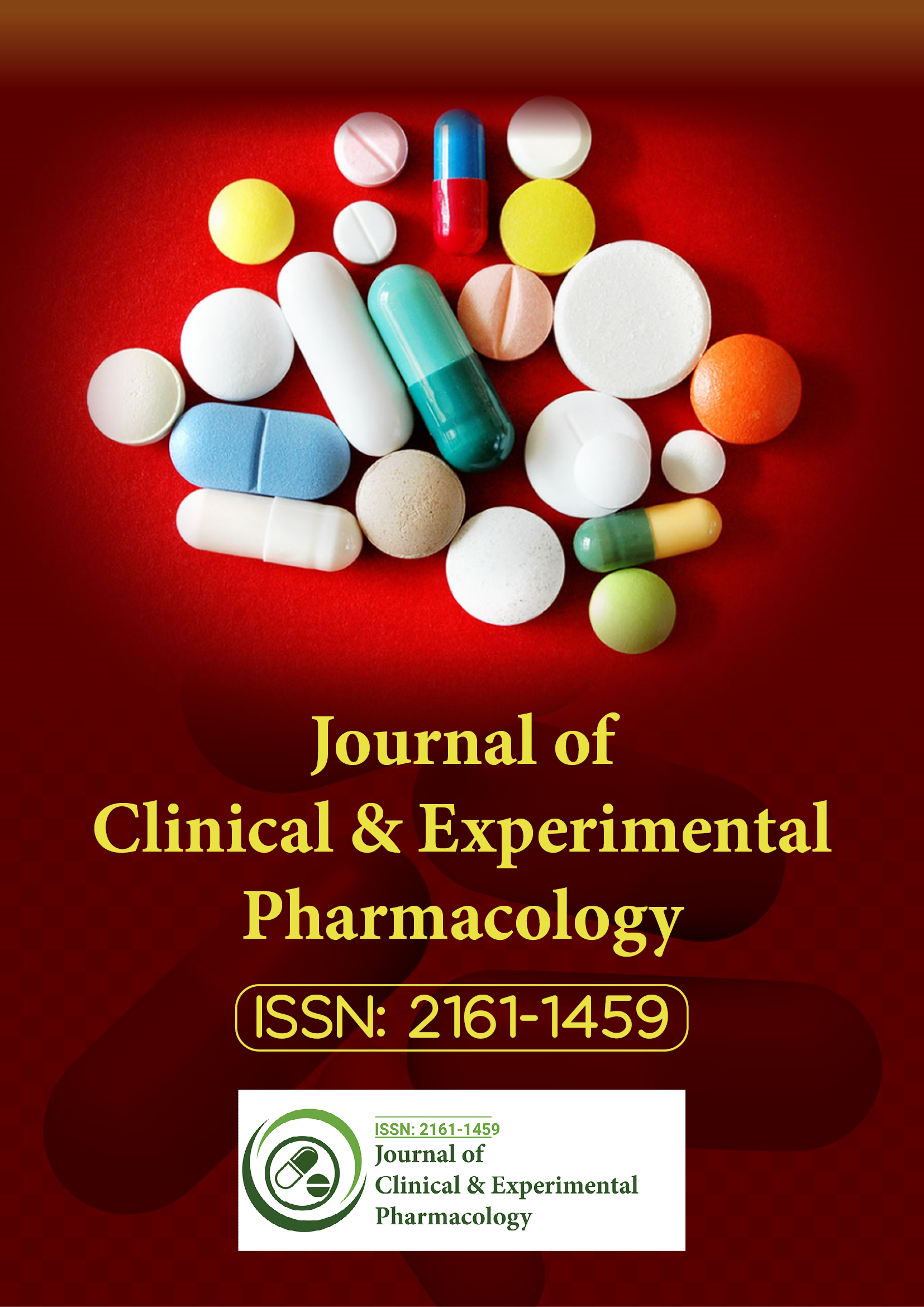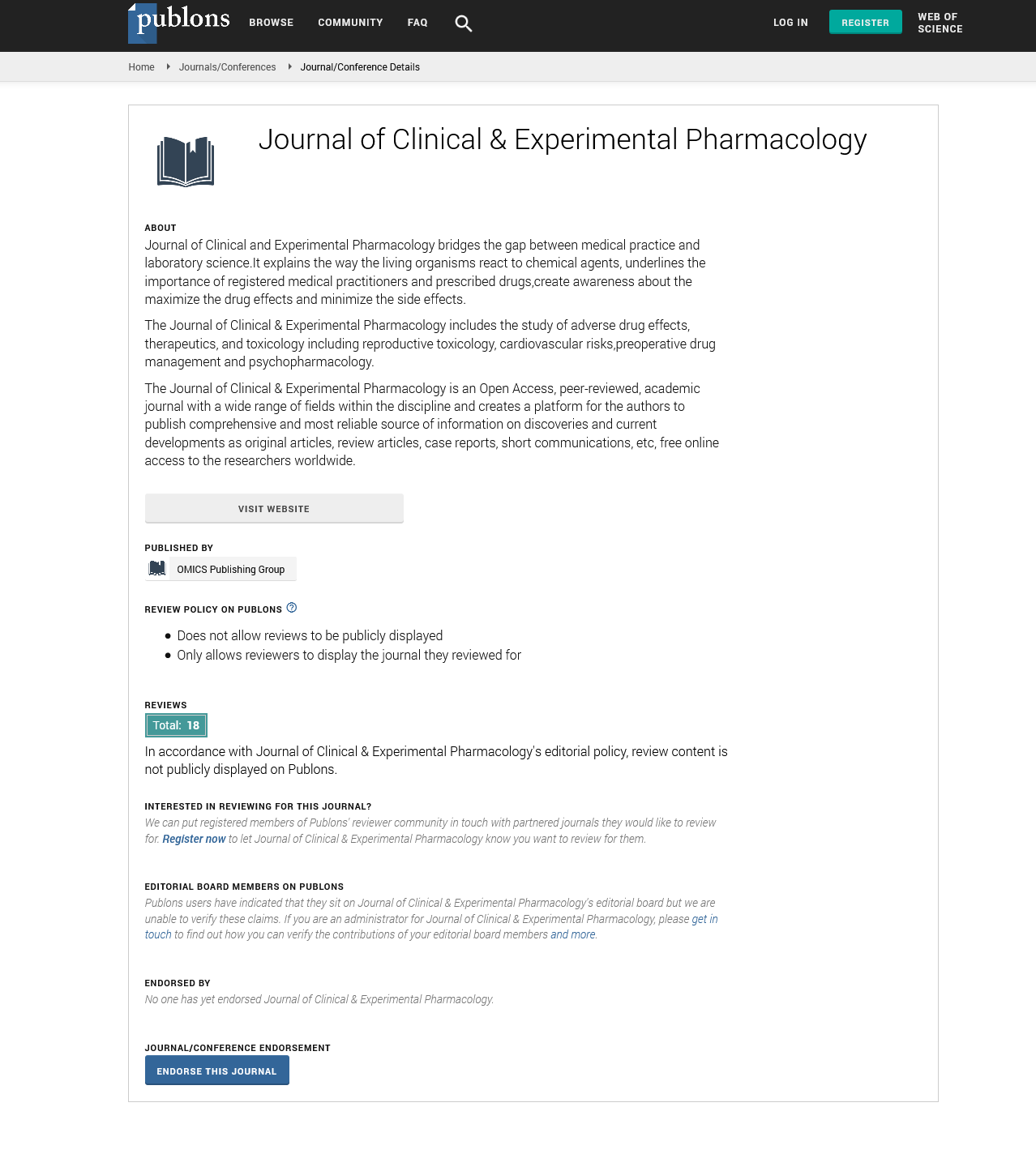Indexed In
- Open J Gate
- Genamics JournalSeek
- China National Knowledge Infrastructure (CNKI)
- Ulrich's Periodicals Directory
- RefSeek
- Hamdard University
- EBSCO A-Z
- OCLC- WorldCat
- Publons
- Google Scholar
Useful Links
Share This Page
Journal Flyer

Open Access Journals
- Agri and Aquaculture
- Biochemistry
- Bioinformatics & Systems Biology
- Business & Management
- Chemistry
- Clinical Sciences
- Engineering
- Food & Nutrition
- General Science
- Genetics & Molecular Biology
- Immunology & Microbiology
- Medical Sciences
- Neuroscience & Psychology
- Nursing & Health Care
- Pharmaceutical Sciences
Opinion Article - (2025) Volume 15, Issue 2
Role of Ethnopharmacology in Integrating Traditional Medicine with Evidence-Based Healthcare
Asfausu Oimau*Received: 24-Mar-2025, Manuscript No. CPECR-25-28867; Editor assigned: 26-Mar-2025, Pre QC No. CPECR-25-28867 (PQ); Reviewed: 10-Apr-2025, QC No. CPECR-25-28867; Revised: 18-Apr-2025, Manuscript No. CPECR-25-28867 (R); Published: 25-Apr-2025, DOI: 10.35248/2161-1459.25.15.477
Description
Ethnopharmacology is the interdisciplinary study of the traditional use of plants, animals and minerals in medicine by indigenous and local cultures. It explores how communities use natural resources to treat, manage and prevent illness, often guided by long-standing cultural practices. This field combines aspects of pharmacology, botany, anthropology and chemistry to investigate bioactive substances derived from traditional remedies.
Historical background and scope
The use of natural products in healing is among the oldest practices in human history. Ancient texts from China, India, Mesopotamia and Egypt detail plant-based treatments for various ailments. Similarly, oral traditions have passed down medicinal knowledge in many parts of Africa, South America and Southeast Asia. Ethnopharmacology emerged as a formal discipline in the mid-20th century, when researchers began systematically studying traditional remedies to uncover their scientific basis. Today, it involves fieldwork with local healers, laboratory-based screening of extracts and efforts to identify and characterize bioactive molecules. It also extends to the study of traditional food-medicine interactions and the social roles of medicinal plants.
Methodology and research approaches
Ethnopharmacological research often begins with ethnobotanical surveys. Researchers collaborate with traditional healers and communities to record the uses, preparation methods and sources of medicinal materials. Accurate taxonomic identification of plant species is essential, followed by the collection of samples for laboratory analysis. In the lab, various extraction techniques are applied to isolate plant constituents. These extracts are subjected to bioassays to assess properties such as antimicrobial, anti-inflammatory, antidiabetic, or anticancer activity. Techniques like High-Performance Liquid Chromatography (HPLC), Mass Spectrometry (MS) and Nuclear Magnetic Resonance (NMR) help identify active compounds. Ethnopharmacologists also consider the mode of preparation and dosage used in traditional contexts, comparing it to standardized procedures. This holistic approach ensures that the study of traditional medicine remains respectful and contextually informed.
Phytochemical diversity and natural products
Plants produce a wide array of secondary metabolites, many of which contribute to their therapeutic properties. Alkaloids, flavonoids, terpenoids, tannins and glycosides are among the compounds frequently encountered in medicinal plants. These molecules often have complex structures and display a range of pharmacological effects. For example, Artemisia annua, used in Chinese traditional medicine, led to the discovery of artemisinin, a powerful antimalarial compound. Similarly, Catharanthus roseus, traditionally used in Madagascar, became the source of vincristine and vinblastine, important anticancer agents. These successes highlight the chemical potential found in traditional remedies and the relevance of continued exploration.
Ethical considerations and community involvement
Conducting ethnopharmacological research raises several ethical questions. Issues of intellectual property, benefit-sharing and cultural sensitivity must be carefully addressed. Local communities often have deep-rooted spiritual and cultural connections to their medicinal knowledge and their consent and involvement are essential throughout the research process. International frameworks such as the Nagoya Protocol guide fair and equitable access to genetic resources and associated traditional knowledge. Researchers are encouraged to establish transparent agreements, support capacity-building and share benefits arising from commercial development. Community participation also helps avoid exploitation and ensures that traditional knowledge holders are recognized and respected. In many cases, ethnopharmacology serves as a tool for empowering local communities by validating their health practices and integrating them into broader healthcare systems.
Applications in modern medicine
Ethnopharmacology continues to contribute to the discovery of novel therapeutic agents. A significant proportion of modern pharmaceuticals are derived from natural products, many of which originated from traditional knowledge. In addition to drug discovery, ethnopharmacological insights are valuable in developing nutraceuticals, herbal formulations and complementary therapies. This field also plays a role in addressing global health challenges such as antibiotic resistance, where alternative antimicrobial agents are urgently needed. Traditional remedies often provide leads for compounds with novel mechanisms of action. Moreover, ethnopharmacology can support primary healthcare in rural and underserved regions, where access to modern medicine may be limited. By validating safe and effective traditional remedies, researchers help improve local healthcare strategies using available resources.
Challenges and future directions
Despite its contributions, ethnopharmacology faces several challenges. One issue is the decline of traditional knowledge due to urbanization, globalization and the loss of indigenous languages. This knowledge erosion threatens both cultural heritage and potential medical discoveries. Scientific challenges include variability in plant composition due to ecological factors, difficulties in standardization and limited clinical validation of many traditional remedies. Bridging the gap between traditional use and modern scientific evidence remains a central task.
Future research must incorporate multidisciplinary approaches, combining molecular biology, pharmacology, systems biology and artificial intelligence to deepen understanding and accelerate discovery. Advances in metabolomics and genomics are expected to enhance the identification of active ingredients and their modes of action. Efforts to digitize traditional knowledge and create global databases of medicinal plants may also facilitate knowledge sharing while safeguarding intellectual rights.
Conclusion
Ethnopharmacology stands at the intersection of tradition and science, offering pathways to new therapeutic discoveries and healthcare solutions. Through respectful collaboration with local communities and rigorous scientific inquiry, this field contributes to both medical innovation and the preservation of cultural knowledge. Continued exploration of traditional medicinal systems will not only enrich our understanding of natural products but also help address pressing global health needs in a sustainable and inclusive manner.
Citation: Oimau A (2025). Role of Ethnopharmacology in Integrating Traditional Medicine with Evidence-Based Healthcare. J Clin Exp Pharmacol. 15:477.
Copyright: © 2025 Oimau A. This is an open-access article distributed under the terms of the Creative Commons Attribution License, which permits unrestricted use, distribution and reproduction in any medium, provided the original author and source are credited.

